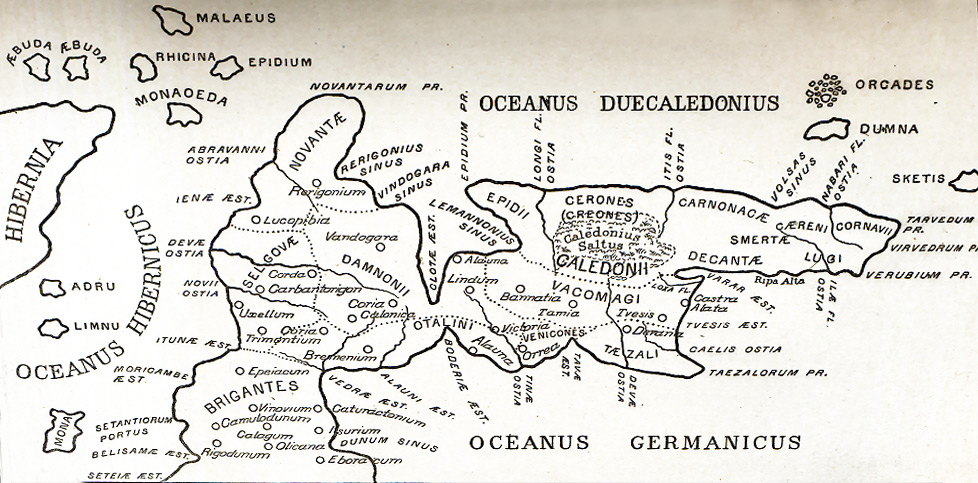Dark Age Scotland Without Oxygen? March 25, 2012
Author: Beach Combing | in : Ancient, Medieval , trackbackFirst of all huge apologies for lack of coverage in these days: the Beachcombing household really is in a it-doesn’t-rain-it-pours month. In less than 48 hours their beloved aupair disappears and despite honourable and numerous dishonourable efforts to sort this out they have been left uncovered. The first time someone falls ill there is going to be hell to play… And already Beachcombing has been signed up for a mega 48 hour just-look-after-them while his wife has to go and do unpleasant things in Athens. Then there is also the news that Beach’s father-in-law (predictably difficult relationship) is coming to live with the family for a few weeks. And no this will not make things easier: he’s a sociologist. He’ll also be recovering from an operation and telling Beach where to hang his pictures.
Please be patient then if you’ve written an email. In the meantime here is another part of Procopius’ crazy mid-sixth century ravings about an island called Brittia, which is probably Britain. This passage is usually taken as proving that Brittia is indeed Britain because of what is apparently a sixth-century record of Hadrians Wall; by then abandoned.
Now in this island of Brittia the men of ancient times built a long wall, cutting off a large part of it, and the climate and the soil and everything else is not alike on the two sides of it. For to the east of the Wall there is salubrious air, changing with the seasons being moderately warm in summer and cool in winter. And many people dwell there, living in the same fashion as other men, and the trees abound with fruits which ripen at the fitting season, and the corn lands flourish as abundantly as any other; furthermore, the land seems to display a genuine pride in an abundance of springs of water. But on the west side everything is reverse side of this, so that it is actually impossible for a man to survive there even a half hour, but countless snakes and serpents and every other kind of wild creature occupy this area as their own. And strangest of all the inhabitants say that if any man crosses this wall and goes to the other side, he dies straightaway, being quite unable to support the pestilential air of that region, and wild animals, likewise which go there are instantly met and taken by death.
It would be interesting to see what the Scottish tourist board would make of this. Perhaps they would point out that the geography suggests that this is not Scotland as the wall runs from north to south dividing the island into western and eastern parts. This does not tally, of course, with Hadrian’s Wall, nor the Antonine Wall that run from east to west dividing the island into southern and northern sections. This might have something to do with the strange Roman geographical error that misconstrued the position of ‘Scotland’ in Britain: see the illustration at the head of the post. In that case what we probably have here is the rumour of the last legionnaires staring into that God forsaken heather… Any other ideas: drbeachcombing AT yahoo DOT com
PS Mrs B has just pointed out the obvious. If Beach’s solution with the bent Roman map is correct – and it sounds credible – it is Scotland that has lots of springs and a pleasant climate and England where you can’t breathe the air…
***
30/04/2012: Gary V writes in: The bend is documented as far back as Ptolemy’s Geography, here is the relevant section of John Pinkerton’s An enquiry into the history of Scotland: preceding the reign of Malcolm III But the bend is common knowledge among people familiar with ancient and medieval geography. Who are you going to believe? Ptolemy or your lying sextant?‘ Thanks Gary!
18 Feb 2014: WRP writes in: The pestilential air of (what is now) England: the Britons burnt coal; one Roman writer wondered at their ability to “burn stones”. The coal mining areas of Tyneside and West Cumberland abut on the wall: smokey zones, I dare say. North of the wall you have, on the west, the Scottish Solway plain, and Annandale and the lower reaches of Nithsdale: good agricultural land without coal. On the East you reach up to the Tweed basin, again good land without coal. The nearest Scottish coal fields would be comparatively distant – East Lothian on the east and perhaps (if the coal had been discovered at the time) the northern extreme of Nithsdale on the west. Not a bad explanation, doncha think?’ Thanks WRP, I’d love to know the Roman source. I can’t recall it, but there are many!!!!



